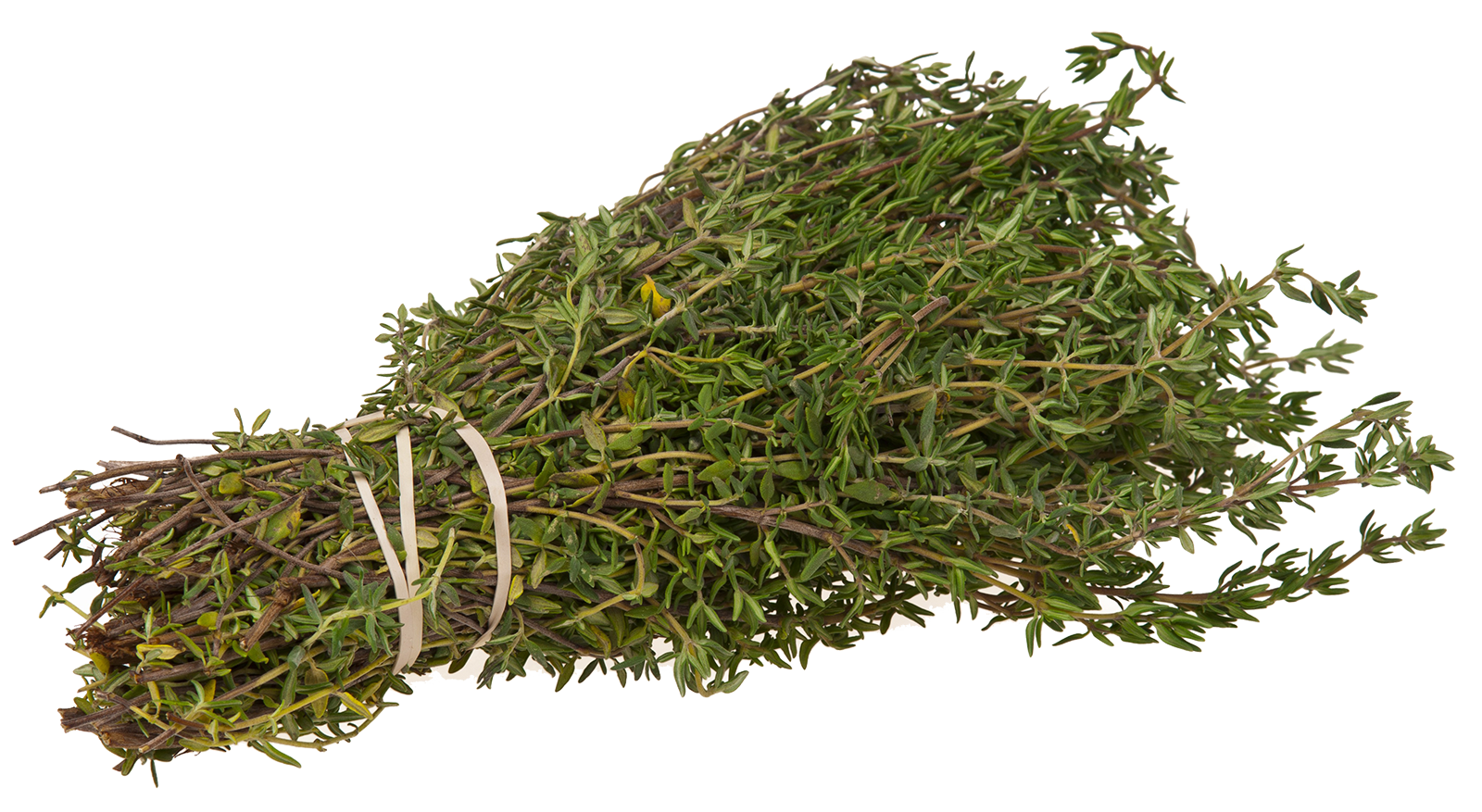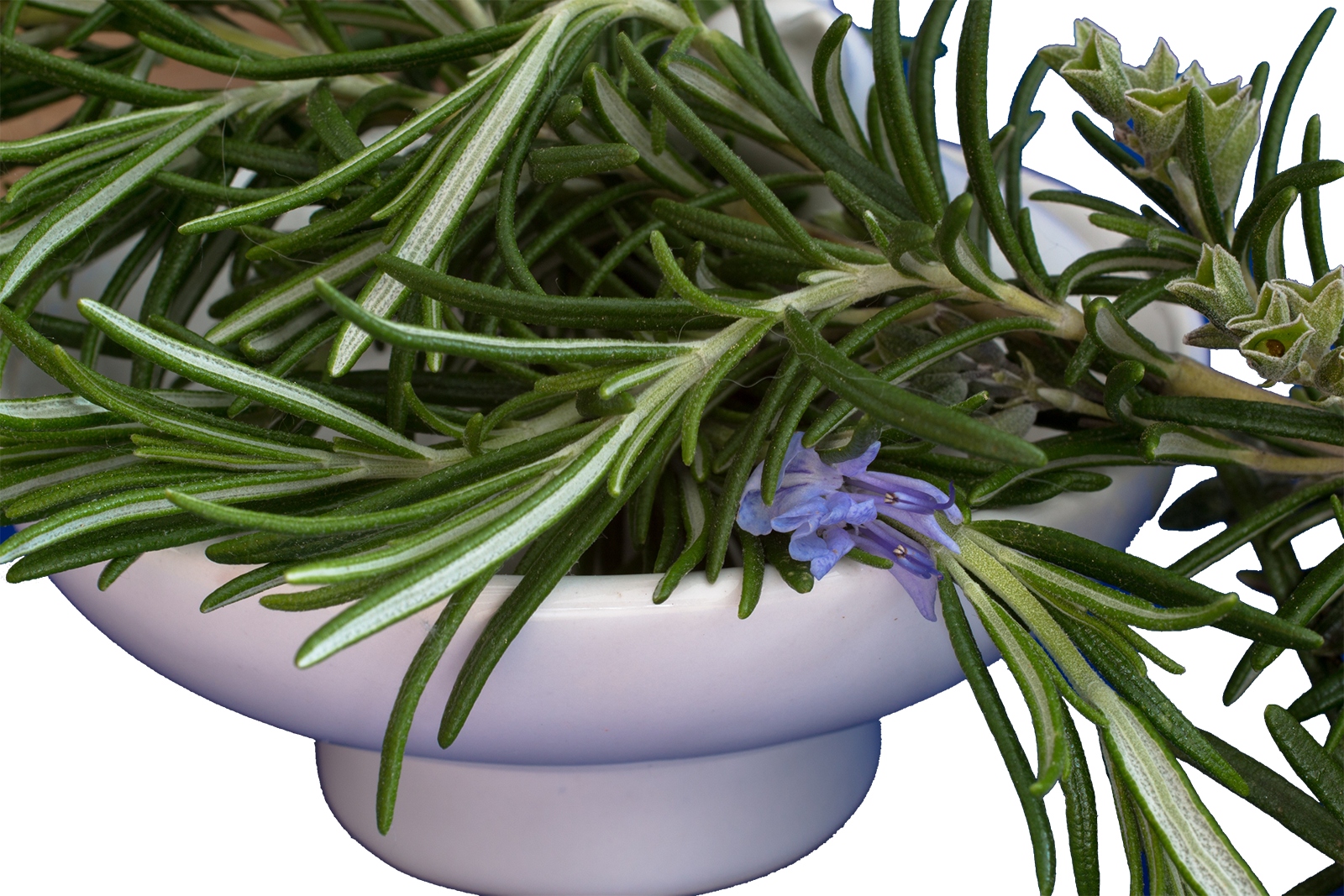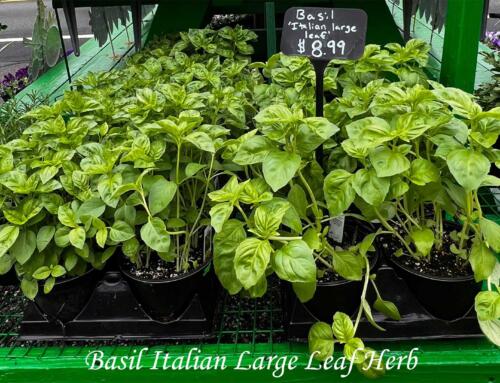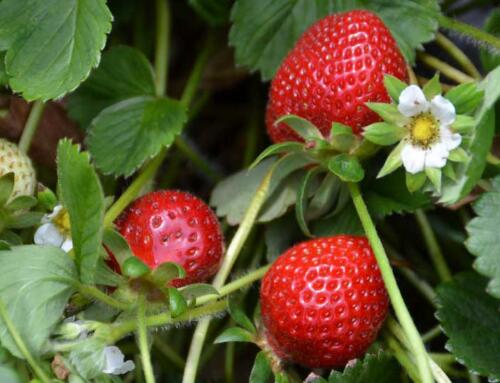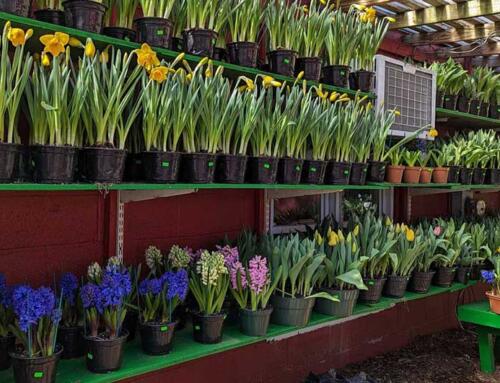Easy To Grow Herbs
with Powerful Health Benefits
“When we choose whole, unprocessed, plant-based foods – our bodies will thank us for sparing us from potentially harmful, disease-causing chemicals and the unfortunately common evils of processed foods like added sugars, salts, artificial flavors, fillers, preservatives and fats.”
In lieu of the current circumstances regarding the health crisis, many of us are now choosing to grow our own fruits, vegetables and herbs at home. As such; herein is a 3 part primer for beginner gardeners and families to learn about some easy to grow herbs with numerous documented health and dietary benefits. Each post will focus upon three herbs, all of which are available at our garden center during the growing season.
Herbs That Can Help You Stay Healthy
Herbs are the leaf part of a plant that is used in cooking – these can be used fresh or dried. Any other part of the plant, which is usually dried, is referred to as a spice. These include, for example, bark (cinnamon), berries (peppercorns), seeds (cumin), roots (turmeric), flower (chamomile), buds (cloves) and the stigma of a flower (saffron). Herbs are a fantastic way to add flavor and color to any sort of dish or drink, whether sweet or savory, without adding fat, salt or sugars. In addition to flavor and color, they each also tend to have their own set of health-promoting properties.
Generally, fresh herbs are delicately flavored, so if adding them to your cooking, do so in the last few minutes. Tasting your dish as you go along will help you tell if you’ve added enough. If not enough herbs are used, then little difference will be made to the flavor of the dish, but if too many herbs are added, their flavor will overpower other ingredients. Consuming herbs may help to prevent and manage heart disease, cancer and diabetes. It may also help to reduce blood clots and provide anti-inflammatory and anti-tumor properties. Fresh herbs often contain higher antioxidant levels compared to processed or dried herbs but if you are using herbs in order to harness their health-promoting aspects first and foremost, aim to add your fresh herbs at the end of cooking or as you serve to preserve these properties.
Thyme
Thyme is a Mediterranean herb from the mint family that you probably recognize from your spice set, with dietary, medicinal, and ornamental uses. The flowers, leaves, and oil of thyme have been used to treat a range of symptoms and complaints. Thymol is one of a naturally occurring class of compounds known as biocides. These are substances that can destroy harmful organisms, such as infectious bacteria. Used alongside other biocides, such as carvacrol, thyme has strong antimicrobial properties.
Culinary thyme is a hardy perennial that is evergreen in most gardening zones. It is drought-tolerant and pollinator-friendly. Thyme is an herb whose small leaves grow on clusters of thin stems. Common thyme and lemon thyme are the varieties most often used in cooking. Lemon thyme looks similar to common thyme but offers a distinctive lemon aroma and flavor. You may also encounter woolly thyme, creeping thyme, wild thyme, and elfin thyme—all of which are better suited for rock garden filler than culinary use.
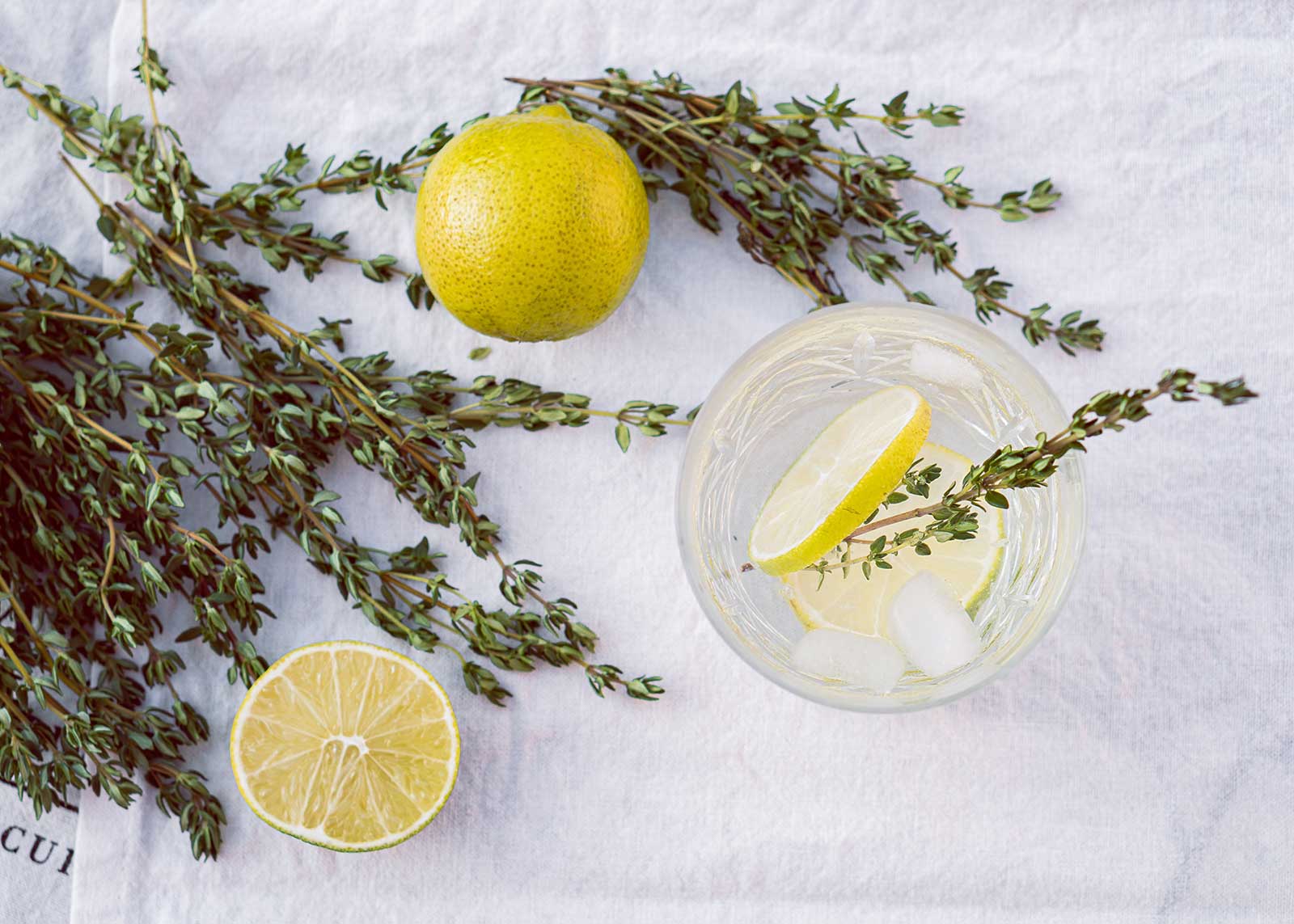
Thyme is also fast gaining a reputation for its medicinal qualities, such as its ability to help treat acne and high blood pressure. Getting all the vitamins your body needs every day can be challenging. Luckily, thyme is packed with vitamin C and is also a good source of vitamin A. If you feel a cold coming on, thyme can help get you back in good health. Another health benefit of thyme: It’s a good source of copper, fiber, iron, and manganese. Fresh leaves or whole sprigs can be used while preparing meat or poultry. Thyme is also an excellent ingredient to use with fish, like in this heart-healthy white fish recipe.
Like mint, thyme can prove challenging to start from seed, so it may be best to purchase plugs at the garden center. If you prefer to grow your own from cuttings then clip a three-inch cutting from the very tip of a stem, apply rooting hormone on the exposed portion of the stem, and plant it in either sterile sand or vermiculite. Roots will emerge within about six weeks. Transfer to a small pot, let the root ball form, and then transfer to a large pot or directly to your garden.
How to Cultivate Thyme
Soil: Plant thyme in well-drained soil with an optimal pH between 6.0 and 8.0. In early spring, you may fertilize with organic matter, like compost, but not much soil amendment is necessary.
Sun: Thyme needs a growing area with plenty of sunlight. Indoors, find a sunny window for your thyme. In the garden, intersperse among other drought-tolerant perennials in an area that receives full sun.
Water: Most varieties of thyme are drought-resistant, so only give a thorough watering, when the soil is completely dry.
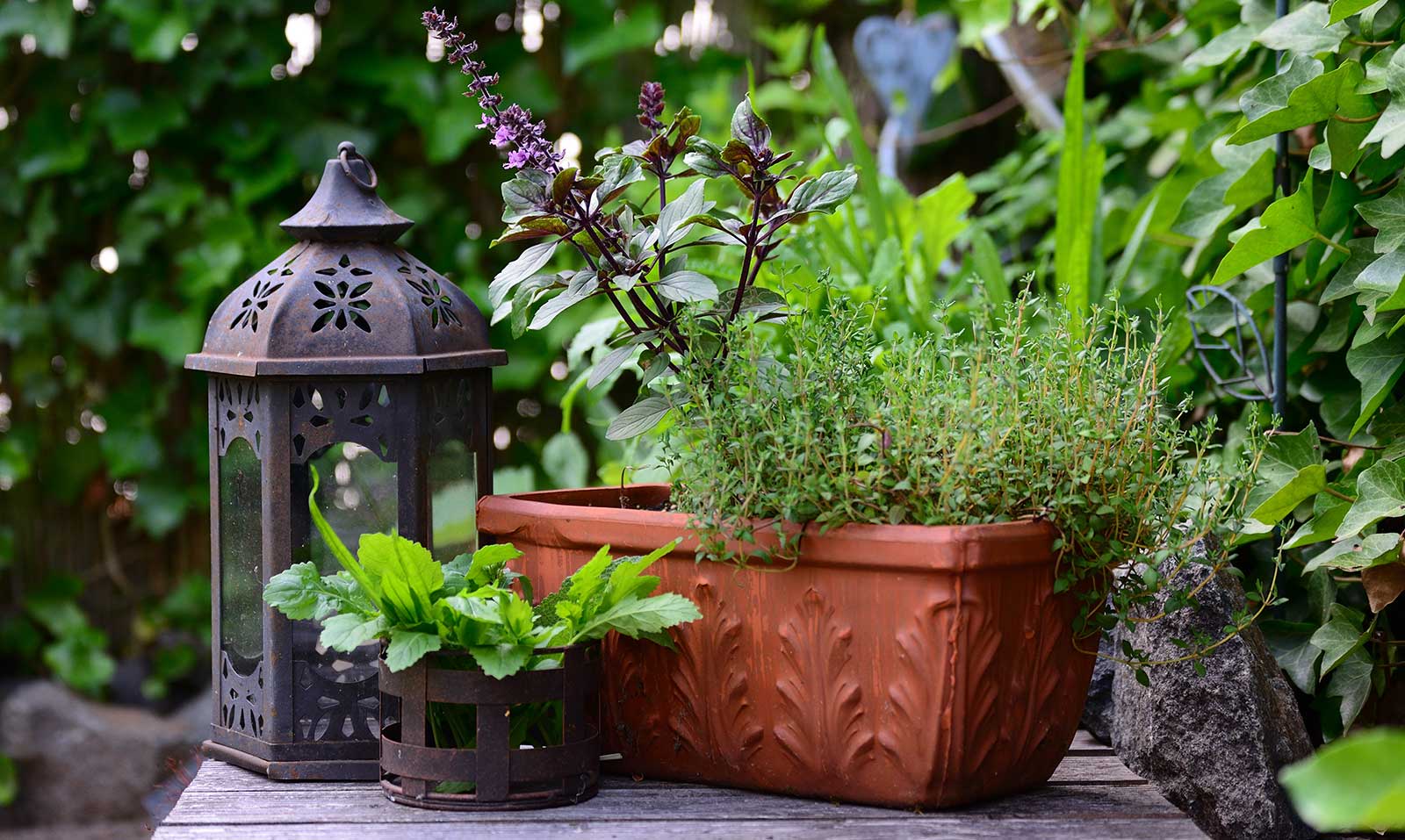 Spacing: Thyme is a vigorous grower, so be sure to space accordingly. Plant anywhere from 12 to 24 inches apart, depending upon the specific variety.
Spacing: Thyme is a vigorous grower, so be sure to space accordingly. Plant anywhere from 12 to 24 inches apart, depending upon the specific variety.
Companion planting: Thyme thrives in sunny conditions, so if you are growing thyme in containers, plant with rosemary, which also has similar watering needs. In the garden, plant alongside strawberries, cabbages, tomatoes, eggplants, broccoli, and Brussels sprouts.
How to Harvest Thyme
In order to obtain the best and most potent flavor, harvest thyme just before the plant flowers. Thyme is one of those herbs, like oregano or sage, which tastes great both fresh and dried. I clip a few sprigs as needed, but I tend to perform a mass harvest a couple times in the growing season.
Really, the more you trim your thyme, the more it grows. Cut fresh stems in the morning, leaving behind tough, woody portions. Leave behind at least five inches of growth, so that the plant can still flourish. Regular pruning not only encourages more growth, but also promotes a more rounded shape.
Sage
Sage (salvia officinalis) is a staple herb in various cuisines around the world. Its other names include common sage, garden sage and Salvia officinalis. It belongs to the mint family, alongside other herbs like oregano, rosemary, basil and thyme. Sage has a unique flavor that brings warmth and complexity to dishes. It works well when combined with other herbs and complements a variety of foods, from meat and seafood to lemon and butter. Both the leaves, fresh and dried, as well as rubbed and powdered versions are used in recipes, typically used in small amounts. Even so, it’s packed with a variety of important nutrients and compounds.
Sage packs a healthy dose of vitamins and minerals. One teaspoon (0.7 grams) of ground sage contains
- Calories: 2
- Protein: 0.1 grams
- Carbs: 0.4 grams
- Fat: 0.1 grams
- Vitamin K: 10% of the reference daily intake (RDI)
- Iron: 1.1% of the RDI
- Vitamin B6: 1.1% of the RDI
- Calcium: 1% of the RDI
- Manganese: 1% of the RDI
As you can see, a small amount of sage packs 10% of your daily vitamin K needs. Sage also contains small amounts of magnesium, zinc, copper and vitamins A, C and E. This aromatic spice houses caffeic acid, chlorogenic acid, rosmarinic acid, ellagic acid and rutin — all of which play a role in its beneficial health effects.
HOW TO PLANT SAGE
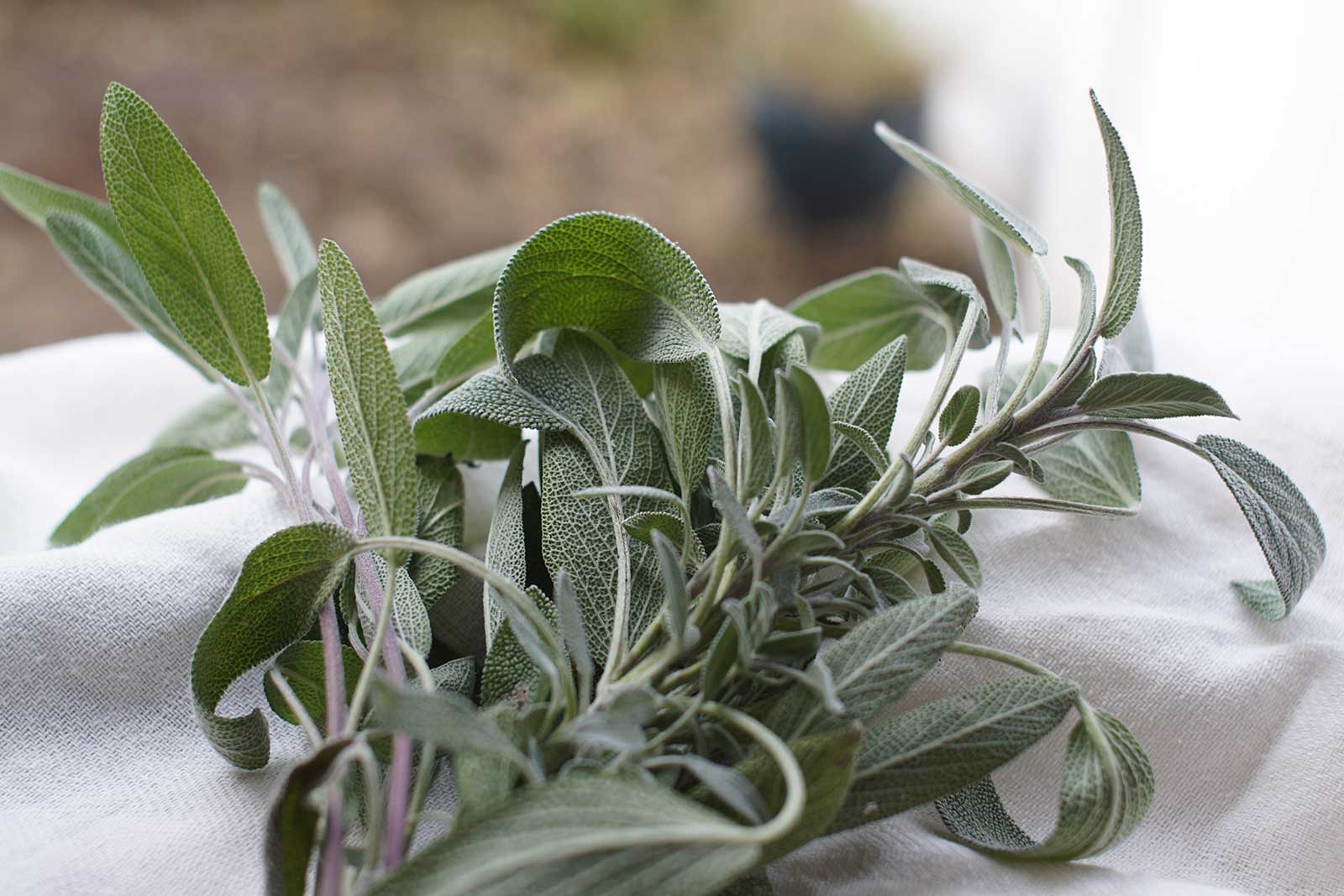
Plant sage in full sun.
Sage should be planted in well-draining soil; it won’t tolerate sitting in wet soil.
The easiest and best way to start sage is from a small plant. Set the plants 2 feet apart.
You can also sow seeds up to two weeks before the last frost date. (See local frost dates.) Plant the seeds/cuttings in well-drained soil 1 to 2 weeks before the last spring frost.
For best growth, the soil should be between 60º and 70ºF.
Plants should grow to be between 12 and 30 inches in height.
HOW TO GROW SAGE
Be sure to water the young plants regularly until they are fully grown so that they don’t dry out. They’ll need a consistent moisture supply until they start growing quickly.
Prune the heavier, woody stems every spring.
It’s best to replace the plants every few years so they remain productive.
HOW TO HARVEST SAGE
Pinch off leaves or snip off small sprigs from the plant.
During the first year, harvest lightly to ensure that the plant grows fully.
After the first year, be sure to leave a few stalks so that the plant can rejuvenate in the future.
If fully established, one plant can be harvested up to three times in one season.
Stop harvesting in the fall so the plant can prepare for winter.
Rosemary
Rosemary (Salvia rosmarinus) is a fragrant evergreen herb native to the Mediterranean. It is used as a culinary condiment, to make bodily perfumes, and for its potential health benefits. Rosemary is a member of the mint family Lamiaceae, along with many other herbs, such as oregano, thyme, basil, and lavender. The scientific name for rosemary plant is Rosmarinus officinalis, which translates to “mist of the sea,” as its gray-green foliage is thought to resemble mist against the sea cliffs of the Mediterranean, where the plant originates.
Rosemary is a perennial evergreen shrub in warmer growing zones (zone 8 and above). Plants can grow to 4-6 feet tall with some varieties having a trailing or cascading habit. Foliage is dark green and needle-like much like a spruce or fir. A white band on the underside gives it a gray coloration. During the summer, rosemary produces small white, pink or blue flowers. The fragrance is an intense camphor or piney scent.
Growing Rosemary
 Plant rosemary in spring once all chances of frost have passed. This delightful herb is an all-star in the kitchen and is a great option for raised garden beds, containers, and in-ground gardens.
Plant rosemary in spring once all chances of frost have passed. This delightful herb is an all-star in the kitchen and is a great option for raised garden beds, containers, and in-ground gardens.- Space rosemary plants 2 to 3 feet apart in an area with abundant sunlight and rich, well-drained soil with a pH of 6.0 to 7.0.
- Before planting, set your garden up for success by mixing in several inches of aged compost or other rich organic matter into your native soil. For container growing, consider a premium bagged potting mix.
- Promote spectacular growth by feeding rosemary regularly with a water-soluble plant food.
- It’s important to water regularly but be sure to let the soil dry out between waterings.
Harvesting Rosemary
The tender tips and foliage can be cut as needed throughout the growing season. Occasionally, longer, woody stems can be harvested and used as skewers for kabobs. Leaves may also be dried and stored for later use. Pruning the plants will encourage a tight compact habit. Plants can also be sheared or pruned into forms resembling small evergreens.


